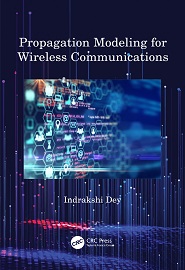
English | 2022 | ISBN: 978-1032080796 | 236 Pages | PDF, EPUB | 18 MB
This book introduces the various approaches and tools used for modelling different propagation environments and lays the foundation for developing a unified theoretical framework for future integrated communication networks. In the case of each type of network, the book uses basic concepts of physics, mathematics, geometry and probability theory to study the impact of the dimension and shape of the propagation environment and relative transmit-receive position on the information flow. The book provides an introduction into wireless communication systems and networks and their applications. For both systems and networks, the basic hard (encoder, modulator, etc.) and soft components (information, signal, etc.) are discussed through schematic block diagrams. Next each of the modes of communication, namely radio waves, acoustic waves, magnetic induction, optical waves, biological particles (molecules, aerosols, neural synapse etc.) and quantum field, are discussed. For each communication scenario presented, the impact of different environmental factors on the propagation phenomenon is articulated, followed by different channel modelling (deterministic, analytical, and stochastic) techniques that are used to characterize the propagation environment. Finally future trends in wireless communication networks are examined and envisioned for next generations 6G/7G of communication systems, like space information networks, sea-to-sky internet of vehicles, and internet of bio-nano things. Based on the future trends of integrated networks, the book drives the need for a generalized channel model irrespective of the media and mode of information transfer. The primary audience for the book is post-graduate students, researchers and academics in electronics and communications engineering, electrical engineering and computer science.
HomepageResolve the captcha to access the links!